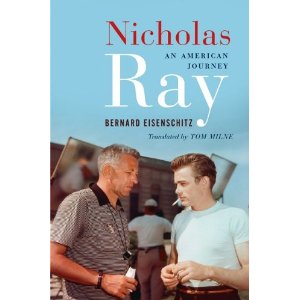This book by Bernard Eisenschitz is, if anything, thorough: 492 pages of text, another 106 of notes, filmography, and index. Although not a work of criticism, and reticent about the quality of individual films, this biography must have been a labor of love. What else could account for the author’s dogged pursuit of quotidian detail, his careful account of changes from one draft to another of screenplays even for films of little importance, quotes from often trivial-seeming memoranda about seemingly minor matters, interviews with whatever survivors he can find? When possible, Eisenschitz carefully compares what participants say and what actually was the case, even when it seems hardly to matter. On top of that, there are myriad details about drunken sprees, periods of depression, breakdowns of confidence, and problems with women and occasionally men. The love labored in this book seems to be more for the man than for his films.
Which is not to say that the book yields little insight into Ray’s work. The author’s account of Ray’s youthful stint in left-wing theatre, for example, and his relationship with men like Woody Guthrie, Alan Lomax, Clifford Odets, Pete Seeger, and, especially, Elia Kazan throws light on Ray’s best-known work and illuminates some lesser Ray films that are worth a second or first look. Ray idolized Kazan, and one senses that he even competed with him. The author’s chapter on Rebel Without a Cause (1955), Ray’s most successful film, gives the impression – not necessarily intended – that Ray wanted to out-emote Kazan’s film of the same year, East of Eden (1955), and draw more out of James Dean, who starred in both films. (The competition, if there was one, may have weakened both films. When I saw Rebel as a teenager, I thought it was a profound expression of what young people like me thought. Seeing the two films as an adult – I hadn’t seen East of Eden when it came out – the lead characters in both films seem whiny.)
Ray seems to have been both gifted and inadequate. He loved to improvise, not just on the set but also over time, as he got to know the actors. He would use his intimacy with them to draw them out. In this he was a consummate Method director and got some superb performances. But Ray apparently could be weak, passive, and insecure on the set. He often would change his mind, for no clear reason, in planning a sequence or setting up a shot. He sometimes seemed as if he was disturbingly unsure of himself. He did not give his actors much in the way of explicit direction. Actors liked this, but a strong personality could see it as a weakness and exploit it. Dennis Hopper, who had a supporting role in Rebel, recalls feeling that Dean, not Ray, directed the movie, and remembers Dean cursing Ray out for having had the temerity to say “Cut,” shouting, “Don’t you ever say fucking Cut, man, I’m the only one who says Cut here” (246-7).
As is well known, Ray was a lifelong alcoholic, and a depressive, which no doubt contributed to, and probably also reflected, his lapses in authoritative direction, which got worse as he got older. His best films were made early in his career. His first, They Live by Night (1949), is among his best. In a Lonely Place (1950) arguably is his best. On Dangerous Ground was released in 1952. Although Ray claimed to have hated Johnny Guitar (1954), it remains fascinating for its reversal of both gender and hero/villain roles. But some of his later films, such as Bigger Than Life (1956) and Bitter Victory (1957), are interesting, too, especially with the background that this book provides, including a European perspective. Jean-Luc Godard, for instance, hailed Bitter Victory and exclaimed “’The Cinema is Nicholas Ray’” (311).
A reader without a passionate interest in Ray, however, might find getting through the book something of an ordeal. Long stretches of less-than-compelling information are frequently interrupted by statements that hint at but withhold tantalizing tidbits. He alludes to a double suicide attempt by Ray and Judy Holliday (80) but tells us nothing about it. He writes that studio executives expressed “misgivings about Maureen O’Hara’s ’extremely revealing postures’” in some of the rushes for A Woman’s Secret (1949) but gives no hint of what the rushes revealed (106). He states that one of Howard Hughes’ “most celebrated memos deals with Jane Russell’s brassiere in [Josef von Sternberg’s] Macao [1952]” but doesn’t quote or paraphrase it (166). When Eisenschitz says that Ray “tried to undo the havoc wrought on Jeffrey Hunter’s diction by studio staff” (374) during the editing of King of Kings (1961), we have no idea of what the havoc consisted in.
My guess is that Eisenschitz became so deeply engrossed in Nicholas Ray’s life that he was often unaware of lapsing occasionally into tediousness on the one hand and frustrating our whetted curiosity on the other. On balance, it is not a crucial failing. The book rewards the persistent reader with a rich grasp of Nicholas Rays’ life, films, and the relationships between the two. As a scholarly work, it is solid and impressive.

